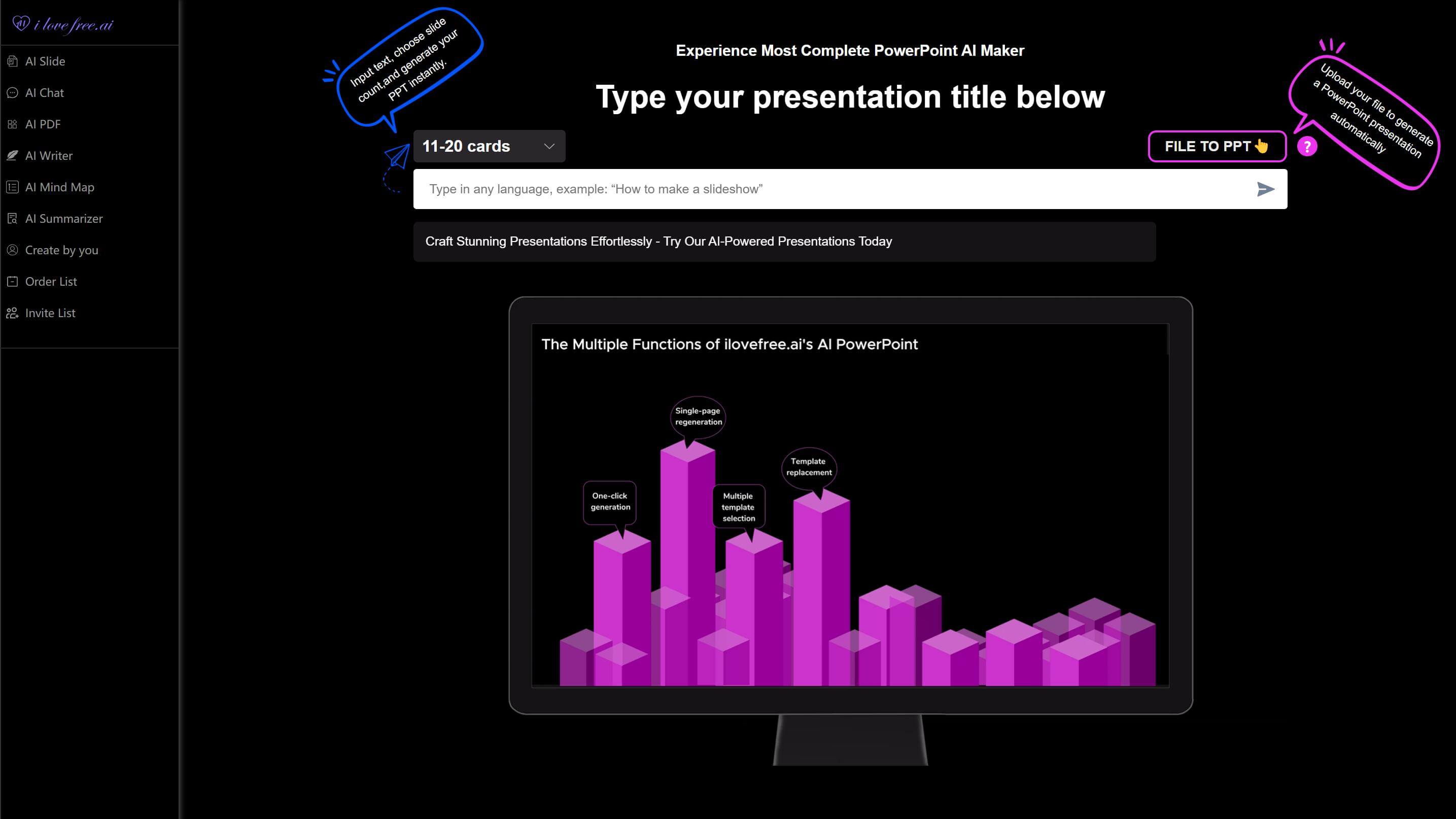
In an era where information overload challenges productivity, organizing ideas visually has become essential. Mind map templates and slides offer structured frameworks to brainstorm, plan, and present concepts with clarity.
A mind map template simplifies complex relationships between ideas using branches, nodes, and colors, while slides provide a platform to showcase these maps in presentations, reports, or educational materials.
This article explores the fundamentals of mind map templates, their benefits, variations, and step-by-step creation methods, with insights into leveraging tools like Ilovefree.ai for seamless design.
What Is a Mind Map Template?
A mind map template is a pre-designed visual framework that helps users structure ideas hierarchically around a central theme. It employs branches, icons, and text to illustrate connections, making it ideal for brainstorming, project planning, or studying.
Slides, as individual presentation pages, often incorporate mind map templates to transform abstract concepts into digestible visuals. Whether used in business meetings or classroom settings, combining mind map templates with slides enhances engagement and ensures ideas are communicated effectively.
Advantages of Using Mind Map Templates
1. Streamlined Idea Organization
They provide a clear structure to categorize thoughts, reducing cognitive clutter. By embedding these templates into slides, presenters can systematically break down topics, ensuring audiences follow logical progressions without confusion.
2. Enhanced Collaboration
Teams can collaborate on a shared template to align on goals or strategies. When integrated into slides, these collaborative maps become central reference points during discussions, fostering unified decision-making.
3. Visual Learning Support
Mind map templates cater to visual learners by converting text-heavy data into diagrams. Educators often use slides featuring such templates to explain complex theories, leveraging colors and shapes to boost retention.
4. Time-Saving Customization
Pre-designed mind map templates eliminate the need to build layouts from scratch. Users can quickly adapt them for slides, replacing placeholder text or adjusting branches to suit specific projects.
5. Versatility Across Formats
They are compatible with digital and print mediums. A slide containing a mind map can be exported as a PDF handout or shared online, maintaining its visual integrity across platforms.
6. Improved Presentation Flow
Slides embedded with mind map templates guide audiences through narratives step-by-step. Presenters can zoom into specific branches during talks, ensuring focus remains on key details.
Types of Mind Map Templates
1. Hierarchical Mind Map Templates
These templates arrange ideas in top-down structures, ideal for organizational charts. A slide might use this type to display company roles, with branches representing departments and sub-teams.
2. Radial Mind Map Templates
Centered on a core idea, radial templates spread subtopics outward like spokes. Creative teams often embed them in slides to brainstorm campaign themes, linking related concepts visually.
3. Flowchart Mind Map Templates
Combining mind maps with flowcharts, these templates map processes with decision points. A project manager could integrate one into a slide to outline workflow stages and dependencies.
4. Comparison Mind Map Templates
Designed to contrast ideas, these templates use split layouts. A marketing slide might compare competitor strategies using a mind map template with parallel branches.
5. Timeline-Based Templates
These templates visualize chronological sequences alongside thematic connections. History educators often use them in slides to link events with causes and effects.
6. Conceptual Mind Map Templates
Focused on abstract themes, these templates connect philosophies or theories. Academics might include them in slides to explore interdisciplinary relationships in research.
7. Matrix Templates
Matrix mind map templates categorize ideas into grids. A business analyst could present SWOT analysis slides using this format, with quadrants for strengths, weaknesses, opportunities, and threats.
8. Interactive Slide Templates
Digital mind map templates in slides can include clickable nodes. Presenters might use these to navigate between sections dynamically, enhancing audience interaction.
How to Create a Mind Map Template
1. Define the Central Theme
Identify the primary topic of your mind map template. For slides, ensure the theme aligns with the presentation’s objective, such as explaining a product launch strategy.
2. Choose a Design Tool
Opt for tools like MindMeister, Canva, or Ilovefree.ai. Verify that the tool supports slide exports (e.g., PPTX) to integrate your mind map seamlessly into presentations.
3. Draft the Core Structure
Start with a central node and add main branches for key categories. If designing for slides, prioritize vertical layouts to fit standard slide dimensions.
4. Incorporate Visual Elements
Use icons, colors, and shapes to differentiate branches. Slides benefit from high-contrast visuals to ensure readability when projected.
5. Assign Text Concisely
Keep node descriptions brief. In slides, pair text with bullet points or keywords to avoid overcrowding the mind map template.
6. Establish Connections
Add cross-links or arrows to show relationships between nodes. In slides, animate these connections to reveal them sequentially during presentations.
7. Optimize for Slide Integration
Resize the mind map template to occupy 70-80% of the slide space, leaving room for titles or footers. Test font sizes to guarantee legibility.
8. Review and Iterate
Share the template with stakeholders for feedback. Refine branch hierarchies or color schemes until the template functions flawlessly within slides.
Build Your Mind Map Template with Ilovefree.ai
Ilovefree.ai offers a cost-effective platform to design mind map templates and slides through its ad-supported model.
- Its AI Slide tool generates presentation outlines and templates based on keywords, which users can modify online.
- The AI Mind Map feature automates branch creation, suggesting sub-topics and visuals aligned with your central theme.
- Additionally, AI Writer crafts slide content by analyzing target audience, tone, and language preferences.
- For collaborative projects, AI Summarizer condenses files or links into digestible inputs for mind maps.
- Users can also leverage AI PDF to convert research documents into slide-ready assets or merge mind maps with existing presentations. By watching ads to unlock premium features, Ilovefree.ai democratizes advanced design tools for educators, entrepreneurs, and creatives.
Mastering mind map templates and slides empowers you to transform chaotic ideas into coherent narratives. From selecting the right template type to harnessing AI-driven platforms like Ilovefree.ai, each step enhances your ability to communicate with precision and creativity.

